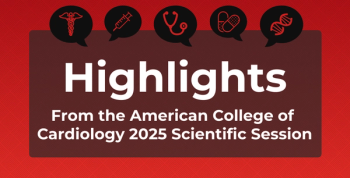
Study Incorporates CGM Data for Guideline, Treatment Development
A new study incorporated use of readings from continuous glucose monitors (CGMs) to establish reference sensor glucose ranges among healthy nondiabetic children aged 1 to 6 years.
Future clinical trials may soon be able to incorporate fresh data on
Using continuous glucose monitors (CGMs) for 10 days among a 39-patient study cohort, aged 1 to 6 years, the study investigators were looking to gather reference data on mean glucose, hyperglycemia, hypoglycemia, and glycemic variability to establish healthy nondiabetic profiles for use in this patient population. Use of the CGM extended beyond 10 days if a participant had less than 72 hours of recorded data. All of the children had a normal body mass index, and the study was carried out at the Barbara Davis Center at the University of Colorado. The mean (SD) age of the trial participants was 4.4 (1.4) years, 51% were female, 87% were White non-Hispanic, and 92% had a first-degree relative living with type 1 diabetes (T1D).
“While data on glycemic profiles of healthy, nondiabetic individuals exist, data on nondiabetic very young children are lacking,” the authors wrote. “Understanding continuous glucose monitoring metrics in healthy individuals without diabetes is needed to serve as a benchmark for clinical research studies to define impaired glycemic status as well as entry criteria and end point into clinical trials, as prevention therapies for T1D are emerging.”
To qualify for study entry, patients had to have a glycated hemoglobin A1C measure below 39 mmol/mol.
Overall, the (SD) mean 24-hour individual average glucose measure was 103 (8) mg/dL (5.7 [0.4] mmol/L), and the mean within-individual coefficient of variation, 17% (3%). Most of the participants’ time (96% [IQR, 92%-97%]) was spent in the glucose range of 70 to 140 mg/dL (3.9-7.8 mmol/L) or 60 to 140 mg/dL (3.3-7.8 mmol/L). The least amount of time (0.4%; 6 min/d) was spent below 70 mg/dL (3.9 mmol/L).
Daytime and nighttime measures varied considerably, with the former having higher results:
- Daytime mean (SD) glucose: 106 (9) mg/dL (5.9 [0.5] mmol/L)
- Nighttime mean (SD) glucose: 97 (8) mg/dL (5.4 [0.4] mmol/L)
- Daytime glucose variability: 17% (3%)
- Nighttime glucose variability: 12% (3%)
However, less time was spent between 70 and 140 mg/dL in the daytime vs nighttime, at 94% vs 98%; glycemic profiles were similar for the children aged 1 to 3 years compared with the children aged 4 to 6 years; and awake and sleep time periods had glucose outcomes similar to the daytime and nighttime periods, the authors wrote.
When presenting their results, the authors noted that the mean overall glucose measure they saw in their very young patients was similar to mean measures seen in 2 other patient populations: 104 mg/dL (5.8 mmol/L) for persons 60 years and older and 98 to 99 mg/dL in individuals aged 7 to 59 years. In addition, their results for percentage of time spent in the glucose range of 70 to 140 mg/dL echo previous findings for adults 60 years and older.
In addition, their findings add to the current knowledge on CGM utility in T1D when comparing with oral glucose tolerance tests, which can take a very long time to perform, they noted—particularly because findings from both have been shown to be highly predictive of progression to diabetes and CGMs “have been shown to be well tolerated by children and their parents.”
Further, their study data have potential for use as guidelines for monitoring children who may be at risk for abnormal blood glucose levels—whether they be too low or too high—and when evaluating treatment choices for optimal patient benefit, not only among patients currently living with T1D but those at risk for T1D.
“As sensor glucose profiles are increasingly used to assess diabetes outcomes both in clinical practice and clinical research trials, there is a critical need for a repository of ‘normative’ continuous glucose monitoring data with the most up-to-date and widely used devices,” the authors concluded. “It will be important to update the results in nondiabetic individuals across all ages periodically as the accuracy of CGM devices improves further.”
Reference
DuBose SN, Kanapka LG, Bradfield B, Sooy M, Beck RW, Steck AK. Continuous glucose monitoring profiles in healthy, nondiabetic young children. J Endocr Soc. Published online April 9, 2022. doi:10.1210/jendso/bvac060
Newsletter
Stay ahead of policy, cost, and value—subscribe to AJMC for expert insights at the intersection of clinical care and health economics.












































